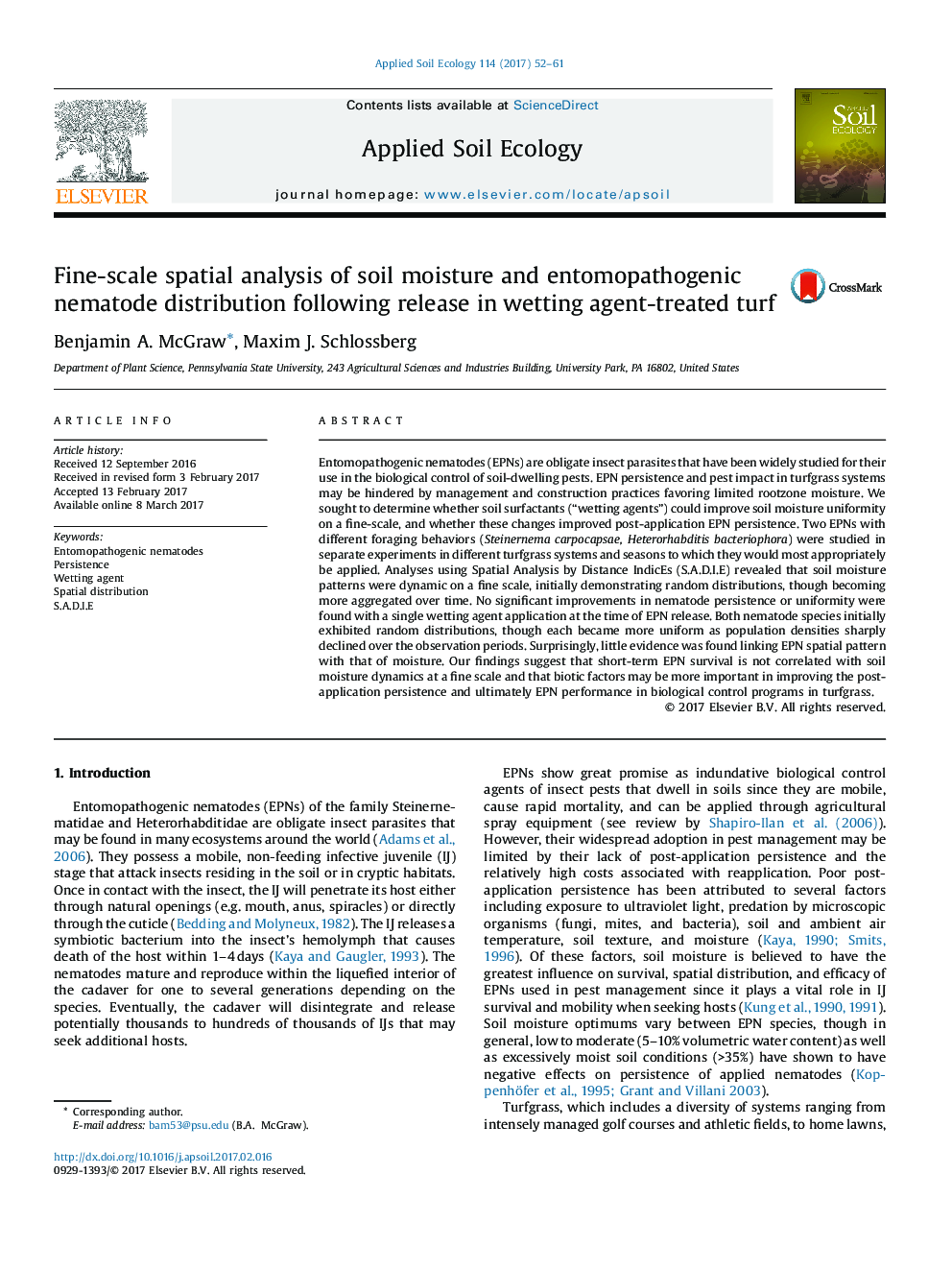| Article ID | Journal | Published Year | Pages | File Type |
|---|---|---|---|---|
| 5742712 | Applied Soil Ecology | 2017 | 10 Pages |
â¢Moisture is critical to entomopathogenic nematode (EPNs) persistence after release.â¢Wetting agents are used in turfgrass management to improve soil moisture levels.â¢EPNs rapidly declined in the days following release independent of treatment.â¢Fine-scale moisture and EPN distribution were rarely correlated.
Entomopathogenic nematodes (EPNs) are obligate insect parasites that have been widely studied for their use in the biological control of soil-dwelling pests. EPN persistence and pest impact in turfgrass systems may be hindered by management and construction practices favoring limited rootzone moisture. We sought to determine whether soil surfactants (“wetting agents”) could improve soil moisture uniformity on a fine-scale, and whether these changes improved post-application EPN persistence. Two EPNs with different foraging behaviors (Steinernema carpocapsae, Heterorhabditis bacteriophora) were studied in separate experiments in different turfgrass systems and seasons to which they would most appropriately be applied. Analyses using Spatial Analysis by Distance IndicEs (S.A.D.I.E) revealed that soil moisture patterns were dynamic on a fine scale, initially demonstrating random distributions, though becoming more aggregated over time. No significant improvements in nematode persistence or uniformity were found with a single wetting agent application at the time of EPN release. Both nematode species initially exhibited random distributions, though each became more uniform as population densities sharply declined over the observation periods. Surprisingly, little evidence was found linking EPN spatial pattern with that of moisture. Our findings suggest that short-term EPN survival is not correlated with soil moisture dynamics at a fine scale and that biotic factors may be more important in improving the post-application persistence and ultimately EPN performance in biological control programs in turfgrass.
